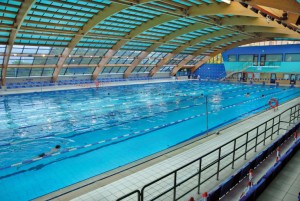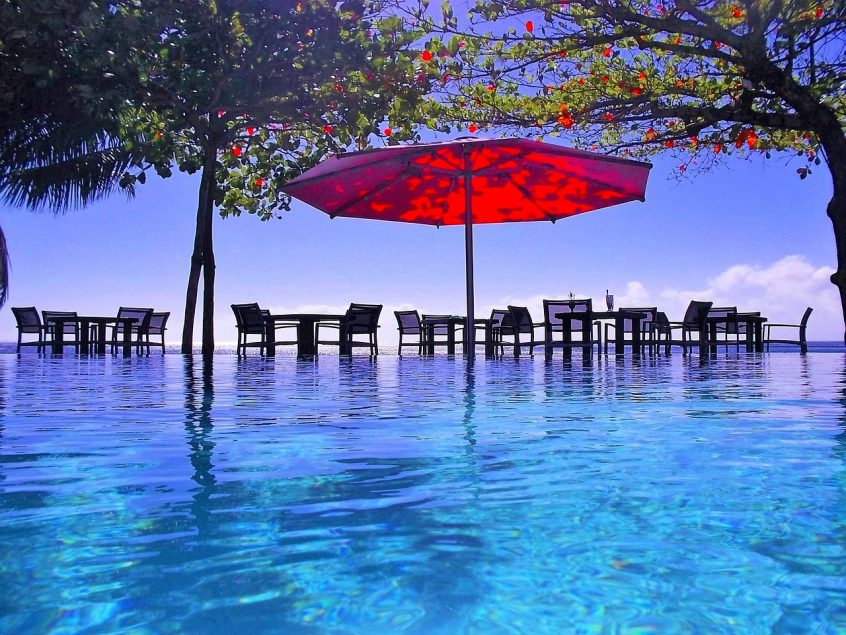For those in the pool, spa and aquatic facilities industries, predicting and understanding future trends is the easy part—the tough part is applying and adapting behaviors to capitalize on those trends. As pool and spa professionals look to the future, one thing is clear: pleasing the customer, and meeting their needs, is of the utmost importance.
What the customer wants
When it comes to customer concerns, family health and safety are typically at the top of the list. Though they want to enjoy the facilities the industry has to offer, customers are not willing to risk their loved ones’ well-being.
Given these concerns, pool and spa professionals need to focus their training efforts on those key customer issues. Consider the following questions:
- In this past year, how many hours have you invested to understand how the industry’s ultimate product (water environments for people) improves a customer’s health and family?
- How many hours have you spent learning how to build, install and apply products, test and maintain systems, and repair, sell, market or run your business?
Now, consider how much time has been invested to train employees on these topics. In a recent study, the National Swimming Pool Foundation (NSPF) reviewed seminar selections at two major trade conferences held in the winter of 2009. Out of the 61 technical seminars offered, not one taught professionals how immersion in water, aquatic exercise or activities around the water benefit a customer’s health or family. All the training focused on the issues outlined in the second question.
Why do pool and spa professionals spend so little time on the topics most valued by potential customers? Perhaps it is because the industry was not founded on the values our products provide to society. The residential pool and spa/hot tub industry, for example, started in the 1950s as a result of sociological forces and clashes, not product benefits.
As a result, there are now three generations of ‘pool people’ who believe the industry exists simply because of its products, as opposed to serving customers’ needs. By shifting focus to these needs and better explaining the benefits of the products and services they sell, pool and spa professionals can set themselves up for significant growth.
Trend 1: A focus on safety
The most significant pool legislation in recent years was driven by one person’s desire to better protect the health and safety of other families. The Virginia Graeme Baker Pool & Spa Safety Act (VGBA) ultimately passed thanks to the efforts of one mother telling a story all pool owners and professionals can relate to—the death of a child died who was entrapped on a residential spa drain.
Though there is debate on the implementation and effectiveness of the legislation, everyone agrees the VGBA’s ultimate goal—drowning and injury prevention, for children and adults—is important. The act has already had a huge financial impact, with roughly 300,000 pools in North America, each requiring approximately $3,000 in implementation costs. It is estimated that facilities that deliver aquatic programs to the public paid out up to $900 million.
If one mother can have such a large impact, consider the mothers, fathers and other relatives who might take similar action in the future. Consider the thousands who are impacted by recreational water illness, chemicals exposures, spinal injuries or even simple trips and falls.
Millions can live longer, healthier lives and enhance the family experience based on water’s benefits. Yet, many have turned away due to the scars of past tragedies. The clash between benefits and injury and death is easily recognizable. As water-related tragedies gain increased exposure through social networking and other websites, members of the pool and spa industry must stay vigilant, making safety a part of their daily lives. Customers expect nothing less for themselves and their families. Not only is focusing on safety the right thing to do, it also protects businesses and individuals from the threat of costly lawsuits and legal battles.
Trend #2: Promoting health benefits
In his keynote address at the 2009 World Aquatic Health Conference (WAHC), Bruce Wigo, president of the International Swimming Hall of Fame, talked about the social history of pools as discussed in Contested Waters, a book by Dr. Jeff Wiltse.

A greater focus on efficiency and conservation for pools, spas and aquatic facilities will continue in the face of tighter economic times.
In North America, the 1920s and 1930s saw a boom in the public pool as a social epicentre. As public pools were opened to more and more swimmers, people began abandoning the aquatic facility, opting for a backyard pool of their own. This shift was fueled by strong economic conditions that helped make this dream more affordable. The burgeoning backyard pool industry drove the formation of several organizations that influence the industry to this day. In 1958, Northeast Swimming Pool Association (NSPA), was founded. A year later, the first incarnation of the current Pool & Hot Tub Council of Canada (PHTCC) was formed. The Association of Pool & Spa Professionals (APSP), originally known as the National Spa and Pool Institute (NSPI), was established, followed by the NSPF in 1965.
When one considers the sociological drivers that led the industry’s formation and growth, the general ignorance about aquatic health benefits among builders, retailers, service companies and manufacturers is not surprising. Unfortunately, this apathy toward aquatic health benefits has resulted in a lack of research the industry is only beginning to reverse in recent years. It was not until 2009 that a research centre focusing exclusively on the benefits of aquatics was formed —The National Aquatic Sports Medicine Institute (NASMI) at Washington State University.
Imagine how these news headlines could empower the industry to attract more people to water:
- ‘Recent Study Finds Swimming May Cut Death Risk’
- ‘A Daily Dip… Could Add Years to Your Life’
These are actual headlines driven by research performed by Dr. Steven Blair and his team at the University of South Carolina. His NSPF-sponsored studies are based on a medical database with the health histories of about 80,000 people, followed for 37 years. The second headline was in AARP: The Magazine, the largest print publication in the world, with readership of about 35 million. Getting the word out about aquatic health benefits to as many people as possible, in forums such as these, is the key to raising awareness among customers.
Trend #3: Energy efficiency
People will continue to value the health and safety of their families, even in the face of tighter economic times. As such, there will also be a greater focus on conservation for pools, spas and aquatic facilities. Without financial security, customers and prospects cannot provide for their families. As a result, conservation is emerging as an important trend, one that will help customers keep aquatics as a part of their life, even while pinching pennies.
When considering the financial impact pools and spas/hot tubs have on society, conservation can encompass many areas. For example, efforts to minimize energy consumption are becoming commonplace in current educational programs and are set to become mainstream in pool and hot tub design and renovation. Shifting to larger plumbing sizes and using pump innovations, such as variable-speed motors, will also help reduce energy costs. Air and water heat transfer systems will become more prominent, allowing more air turnover in indoor facilities. Filtration systems that maintain water quality while conserving will also gain greater prominence, even while those savings are weighed against the need to improve water quality.
Trend #4: Online education
As professionals place a higher value on these three issues, industry education will take a more important role. Innovative delivery methods will also make education more accessible. In the last decade, many courses and curricula have been delivered on the Internet. As younger professionals enter the field and the pool and spa industry becomes more computer-savvy, online training will be an even more popular choice.
Features such as interactive exercises, narration, video demonstrations, quizzes and photos have made online learning more effective. Online training students typically learn faster and retain information for a longer period of time than they would in a traditional classroom setting. However, online learning is ideal when combined with instructor interactions, whether in a classroom or via e-mail, telephone or video conferencing. The online portion of the training allows busy professionals to set their own pace, while the instructor time allows the student to reinforce what he or she has learned, have questions addressed and participate in any hands-on skills training.
By taking advantage of the education opportunities the industry has to offer, pool and spa professionals can not only improve themselves, but also better educate and assist their clients.
Conclusion
Industry members who prosper tomorrow will make it a priority to understand and communicate how water environments improve their potential customers’ health and family, whether it involves protecting clients from injury, promoting aquatic health benefits, offering more energy-efficient technologies or educating themselves about the issues that matter to the consumer.
In short, those who focus on what is really important to customers today will emerge as the industry leaders of tomorrow.
This article was written by Thomas M. Lachocki, PhD and Alex Antoniou, PhD and originally appeared on Pool & Spa Marketing [link].
